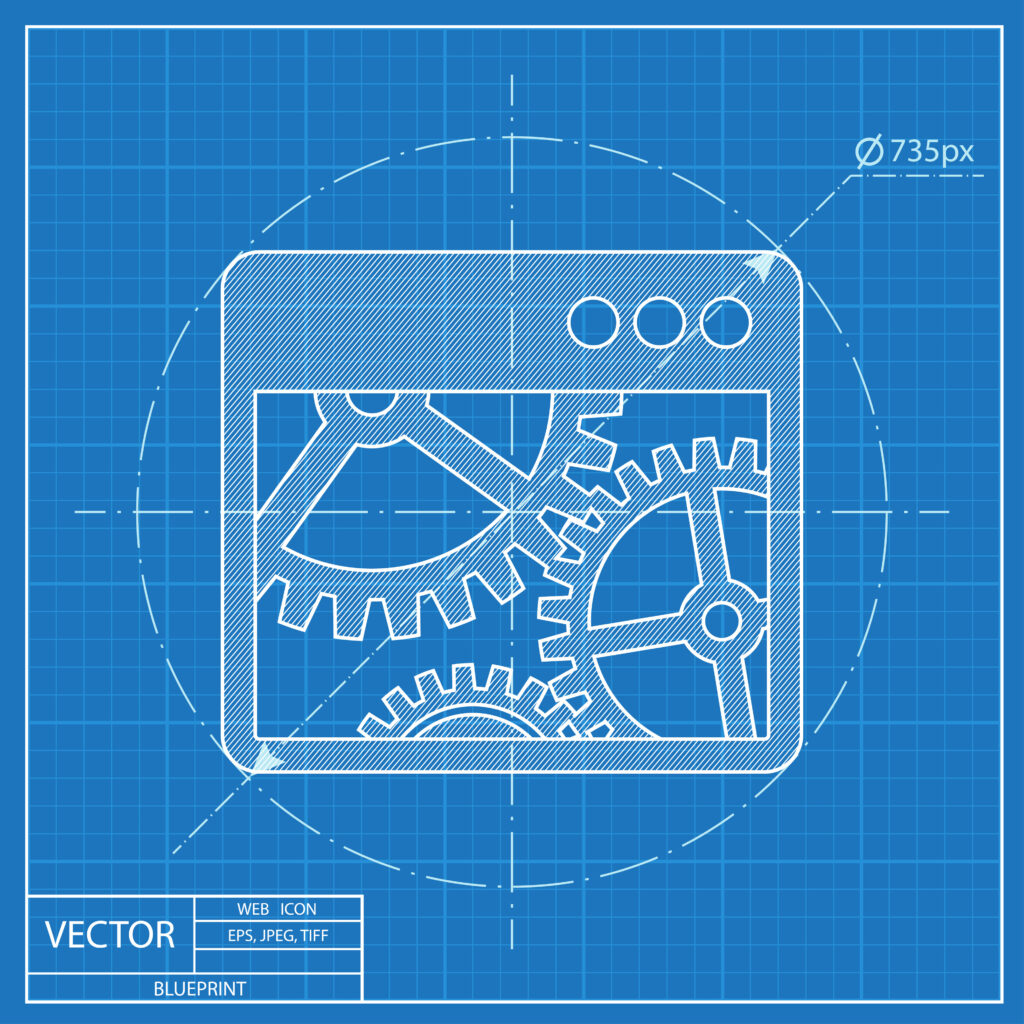INSIGHTS
Exploring SVGs: A Guide to Adding Them to Your Website

By Robert Kegel – SVGs (Scalable Vector Graphics) have become increasingly popular in web development because of their scalability, small file size, and resolution independence. In this blog post, we will explore the advantages and disadvantages of using different methods to add SVGs to a website.

Advantages of using SVGs
Before we dive into the different methods, let’s first look at some of the benefits of using SVGs in general:
- Scalability: SVGs are vector graphics, which means they can be scaled up or down without losing their quality. This makes them ideal for responsive web design.
- Small file size: SVGs are typically smaller in file size than other image formats, such as JPEG or PNG. This means that they can be downloaded faster and can help improve the overall performance of your website.
- Resolution independence: Unlike raster graphics, which are made up of pixels, SVGs are made up of paths and curves, which means they can be displayed at any resolution without losing their quality.
Now that we have looked at some of the advantages of using SVGs, let’s explore the different methods of adding them to a website.
- The <svg> tag
The <svg> tag is the most common way of adding SVGs to a website. This method allows you to include the SVG directly in your HTML code, making it easy to modify the SVG using CSS and JavaScript. The main advantage of using the <svg> tag is that it provides complete control over the SVG.
Advantages:
- Complete control over the SVG, which can be modified using CSS and JavaScript
- Easy to add interactivity to the SVG, such as hover effects or animations
- Good for small, simple SVGs that do not need to be reused across multiple pages
Disadvantages:
- Can be more time-consuming to implement than other methods
- Requires some knowledge of SVG and HTML
Example:
<svg viewBox="0 0 100 100" xmlns="http://www.w3.org/2000/svg">
<rect x="10" y="10" width="80" height="80"/>
</svg>- The <img> tag
The <img> tag can also be used to add an SVG to a website. This method is simple to implement and allows you to adjust the size of the SVG using CSS. However, the main disadvantage of using the <img> tag is that it provides limited control over the SVG, and you cannot modify its properties or add interactivity to it.
Advantages:
- Easy to implement, with no need for extensive knowledge of SVG or HTML
- Can be cached by the browser, leading to faster load times
Disadvantages:
- Limited control over the SVG, with no ability to modify it using CSS or JavaScript
- Not recommended for complex SVGs or those that need to be reused across multiple pages
Example:
<img src="example.svg" alt="Example SVG">- The <object> tag
The <object> tag is another way to add SVGs to a website. This method provides more control over the SVG than the <img> tag and allows you to modify its properties or add interactivity to it using JavaScript or CSS. However, the <object> tag is more complex to implement than the <img> tag, and it can add extra overhead to your website’s loading time.
Advantages:
- More control over the SVG than the <img> tag, with the ability to modify it using CSS or JavaScript
- Display animated SVGs
- Good for complex SVGs or those that need to be reused across multiple pages
- Compatible with all modern browsers
Disadvantages:
- More complex to implement than the <img> tag
- Can add extra overhead to your website’s loading time
Example:
<object data="example.svg" type="image/svg+xml">
<img src="fallback.jpg" alt="Example SVG">
</object>- Using CSS and an encoded SVG in a pseudo-element content property
Finally, you can use CSS to add an SVG to a website by encoding the SVG data in a pseudo-element content property. This method is useful when you need to add decorative elements to your website, such as icons or logos. However, this method also provides limited control over the SVG, and you cannot modify its properties or add interactivity to it.
Advantages:
- Useful for decorative elements, such as icons or logos
- Easy to implement using CSS
- Can be used in combination with other methods, such as the <svg> tag
Disadvantages:
- Limited control over the SVG, with no ability to modify it using CSS or JavaScript
- Not recommended for complex SVGs or those that need to be reused across multiple pages
Example:
.icon::before {
content: url("data:image/svg+xml,%3Csvg viewBox='0 0 100 100' xmlns='http://www.w3.org/2000/svg'%3E%3Crect x='10' y='10' width='80' height='80'/%3E%3C/svg%3E");
}Conclusion
In conclusion, SVGs are an excellent choice for web developers because of their scalability, small file size, and resolution independence. When it comes to adding SVGs to a website, there are several methods to choose from, each with its own advantages and disadvantages. Depending on your needs, you can use the <svg> tag, the <img> tag, the <object> tag, or CSS to add SVGs to your website.
Overall, the method you choose for adding SVGs to your website will depend on your specific needs and preferences. Each method has its own advantages and disadvantages, so consider which factors are most important to you when making your decision.